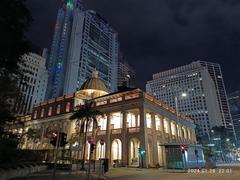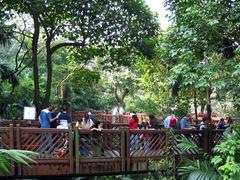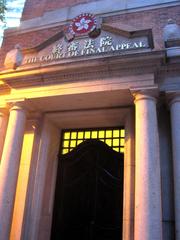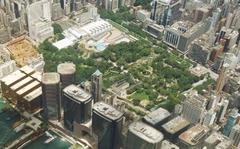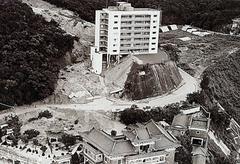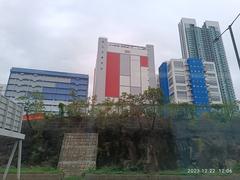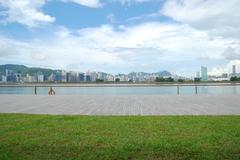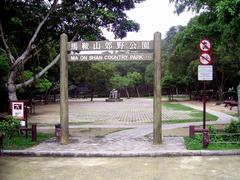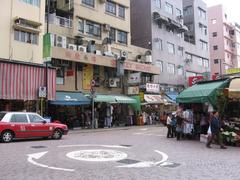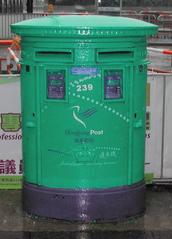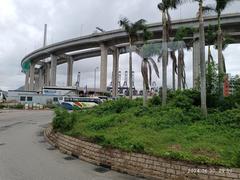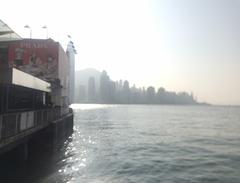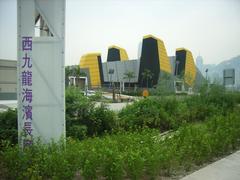Guide to Visiting Shing Mun Road, Hong Kong
Date: 23/07/2024
Introduction to Shing Mun Road
Shing Mun Road (城門道), located in the New Territories of Hong Kong, is a destination that beautifully interweaves history, culture, and natural beauty. Originally constructed during the British colonial era to provide access to the Shing Mun Reservoir, this road has evolved into a treasure trove of historical landmarks, cultural sites, and recreational opportunities. Visitors can explore remnants of old villages, wartime bunkers, and ancient temples, offering a fascinating glimpse into Hong Kong’s past (Discover Hong Kong). The lush Shing Mun Country Park and the serene Shing Mun Reservoir provide a perfect escape for nature lovers and outdoor enthusiasts. This guide aims to provide comprehensive information on the various attractions, historical significance, and practical visitor tips for those planning to explore Shing Mun Road.
Table of Contents
- Introduction
- Early Development and Strategic Importance
- Cultural and Historical Significance
- Environmental Significance
- Recreational Significance
- Educational Significance
- Visitor Information
- Nearby Attractions
- FAQ
- Conclusion
Exploring the Historical Significance of Shing Mun Road in Hong Kong
Early Development and Strategic Importance
Shing Mun Road has a rich historical background dating back to the early 20th century. Initially constructed during the British colonial era, the road was designed to facilitate access to the Shing Mun Reservoir, completed in 1937. This reservoir was a critical project aimed at addressing the water supply needs of Hong Kong’s rapidly growing population.
The construction of Shing Mun Road was a significant engineering feat, involving extensive labor and resources. It provided a crucial link between urban areas and the reservoir, enabling the transportation of materials and workers. During World War II, the road also served as a strategic military route for the British forces.
Shing Mun Reservoir and Its Impact
The Shing Mun Reservoir, also known as the Jubilee Reservoir, was named in honor of the Silver Jubilee of King George V. Its construction required the creation of a large dam and the flooding of the Shing Mun Valley, leading to the relocation of several villages.
The reservoir significantly impacted the local landscape and ecology, creating a vital water source essential for Hong Kong’s urban development. The surrounding areas, now part of the Shing Mun Country Park, offer popular destinations for hiking, picnicking, and nature observation (AFCD).
Post-War Developments and Modernization
After World War II, Shing Mun Road underwent several upgrades to accommodate increasing traffic and development in the New Territories. The road facilitated the area’s transformation from a rural landscape into a bustling suburban area, supporting new residential developments, schools, and commercial establishments.
Cultural and Historical Significance
Shing Mun Road holds cultural and historical significance, reflecting Hong Kong’s colonial past and development phases. The area features historical landmarks such as old villages, wartime bunkers, and ancient temples, making it a fascinating destination for history enthusiasts.
One notable site is the Shing Mun Redoubt, a military fortification built by the British in the 1930s as part of the Gin Drinkers Line. Today, it is a popular spot for history enthusiasts and hikers (Hong Kong War Diary).
Environmental Significance
Shing Mun Road runs through the Shing Mun Country Park, a protected area covering over 1,400 hectares of lush forests, streams, and hiking trails. The park is home to diverse flora and fauna, including rare and endangered species, making it a vital ecological zone in Hong Kong.
The Shing Mun Reservoir plays a crucial role in water conservation and management, attracting numerous visitors each year for picnics, hiking, and bird-watching.
Recreational Significance
Shing Mun Road provides access to several recreational activities, including hiking trails like the Pineapple Dam Nature Trail and the MacLehose Trail. The road’s gentle slopes and scenic vistas make it ideal for cycling. The reservoir also offers opportunities for kayaking and fishing.
Educational Significance
The Shing Mun Arboretum showcases a variety of plant species native to Hong Kong and Asia, providing educational resources for nature lovers and botany enthusiasts. The Shing Mun Country Park Visitor Centre offers educational programs and exhibits on the area’s natural and cultural history.
Visitor Information
- Visiting Hours and Tickets: Shing Mun Country Park is open daily from 9 AM to 6 PM, with free admission. Check the official website for updates.
- Best Time to Visit: The cooler months from October to March offer pleasant weather for outdoor activities.
- Transportation: Accessible by public transport; take the MTR to Tsuen Wan Station and then a bus or taxi.
- Safety and Wildlife: Be cautious of wildlife, especially monkeys. Do not feed or provoke them.
- Facilities: Public restrooms and picnic areas are available. Bring your own food and drinks as dining options are limited.
Nearby Attractions
- Lion Rock Country Park: Offers stunning views and additional hiking trails.
- Tai Po Kau Nature Reserve: Ideal for birdwatching and walking trails.
- Tsuen Wan: A bustling area with shopping malls, restaurants, and cultural sites.
FAQ
- Q: What are the visiting hours for Shing Mun Road?
- A: Generally open from early morning until sunset.
- Q: Are there entrance fees for the attractions?
- A: Most attractions do not require an entrance fee. Some tours may have associated costs.
- Q: What is the best way to get to Shing Mun Road?
- A: Take the MTR to Tsuen Wan Station and then a taxi or bus.
- Q: Is Shing Mun Road suitable for families with children?
- A: Yes, many trails and attractions are family-friendly.
- Q: What should I bring for a visit?
- A: Bring water, comfortable shoes, sun protection, and snacks.
Conclusion
Shing Mun Road offers a unique blend of natural beauty and historical significance, making it a must-visit destination in Hong Kong. Whether exploring the historical Shing Mun Redoubt, hiking up Tai Mo Shan, or enjoying the Pineapple Dam Nature Trail, there’s something for everyone. Plan your visit and discover the rich heritage and stunning landscapes of Shing Mun Road.
For more information, visit the Hong Kong Tourism Board and AFCD.

